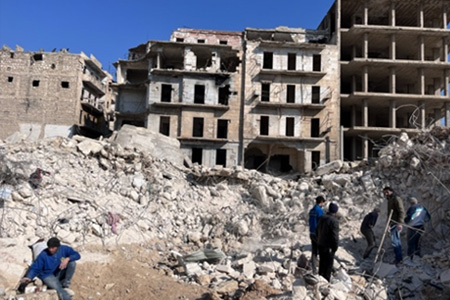
Every day, acutely ill or injured people seek essential medical help across the WHO Eastern Mediterranean Region. Especially in situations where financial or logistical barriers limit access to health care, many people first deal with the health system when acute illness or injury takes them to emergency care.
Frontline health workers handle medical, obstetric and surgical emergencies in both children and adults. These range from injuries and infections to cardiac crises, strokes, acute asthma, and pregnancy complications. Prioritizing an integrated strategy of early recognition and immediate care lessens the effects of such conditions, significantly reducing disability and death.
Our emergency care systems programme aims to strengthen the critical emergency care systems that serve as the first point of contact with health facilities for countless people in the Region. We also support the quality development of emergency care services to guarantee timely assistance to all.
The programme is a fundamental part of public health emergency preparedness and response. It strives to reduce the risks and effects of diverse hazards and emergencies like natural disasters, infectious disease outbreaks and other public health emergencies.
Efforts to enhance preparedness
Through technical support and capacity-building efforts, we help countries to identify and assess potential hazards and risks. We support the creation of efficient emergency and disaster risk reduction strategies and plans. We also evaluate the readiness of health systems and facilities to deal with emergencies and disasters.
Our support extends to emergency care systems in countries and territories of the Region. We can assess their capacities and generate actionable priorities to enhance their readiness for emergencies and disasters. Capacity-building activities at both the prehospital and hospital levels of care further amplify this support.
By ensuring improved disease surveillance at facilities that offer emergency care, we aim to enhance primary prevention and outbreak response. Prehospital and facility-based emergency care stand out as effective secondary preventive measures. They identify signs of disease and prevent further spread, combining high-impact solutions with cost-effectiveness.
According to the Disease Control Priorities Project, putting in place proficient emergency care could address nearly half of all deaths and over one third of disabilities in low- and middle-income countries. In line with the World Health Assembly’s call for integrated emergency and trauma care systems, WHO is dedicated to achieving universal emergency care access as a key component of global health coverage.
Publications
Multimedia
News
Related resources
Emergency care: WHO headquarters
Integrated emergency, critical and operative care





